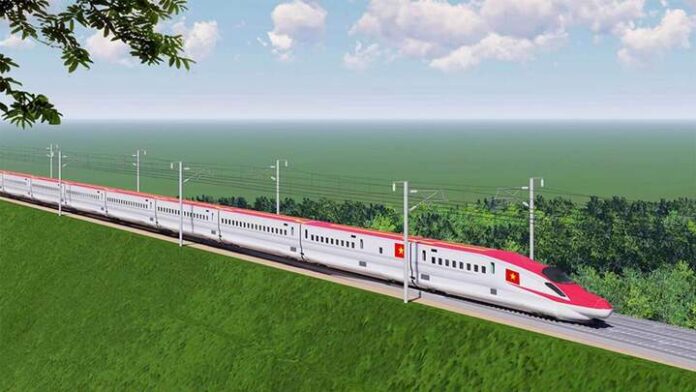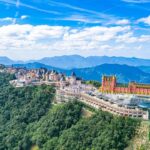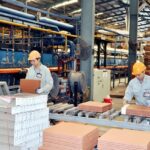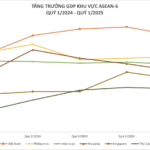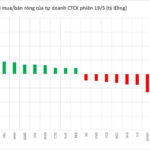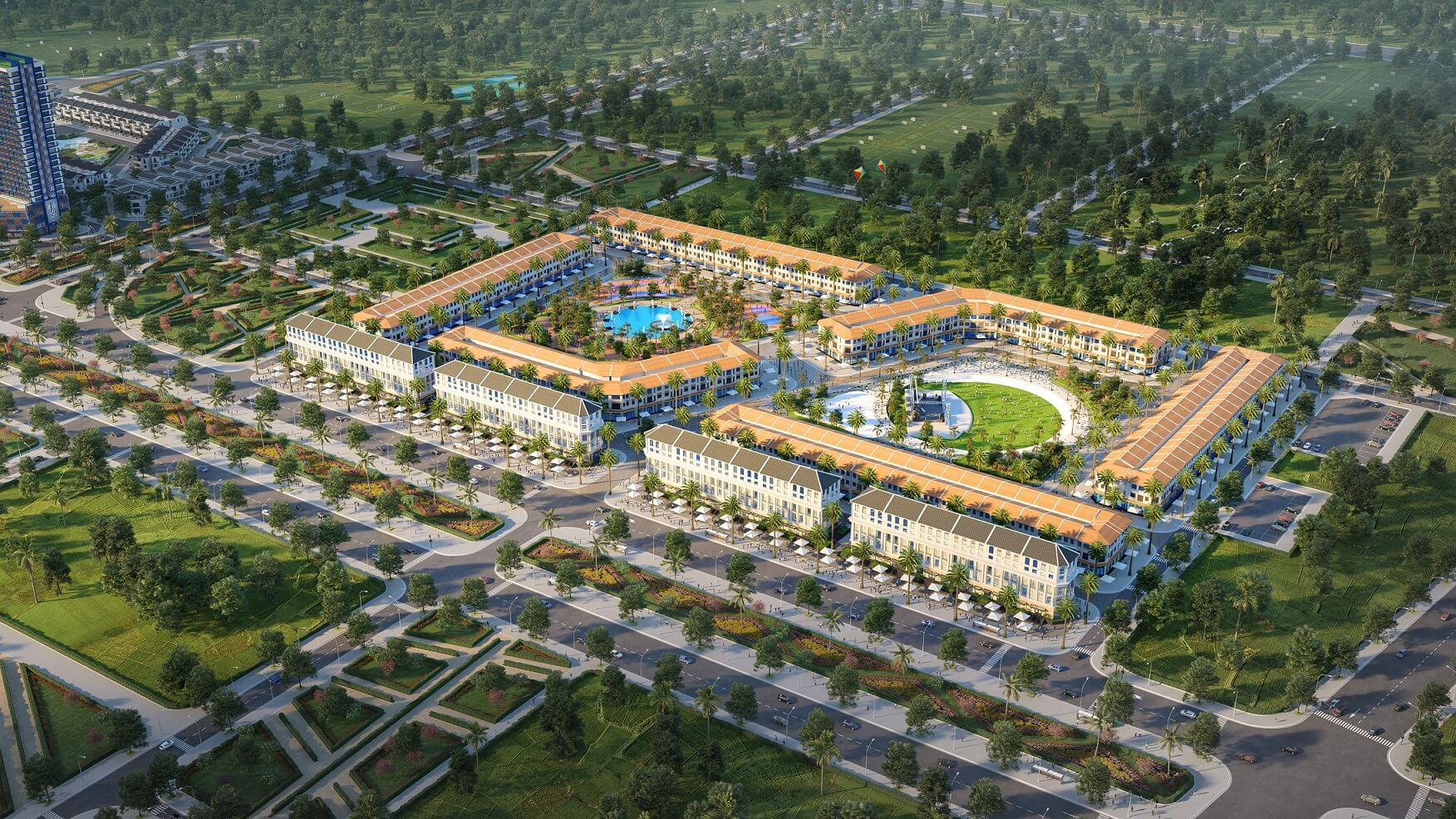Urban Exodus: How High-Speed Rail is Transforming Vietnam’s Real Estate Market
National Assembly Deputy Nguyen Quang Huan from Binh Duong Province, Vice Chairman of the Private Business Association of Vietnam, shared his insights on urban development. He introduced the concept of Transit-Oriented Development (TOD), which maximizes residential, commercial, and entertainment spaces while strengthening the local economy and reducing commute time and costs for citizens.
“With the planned speed of 350 km/h for the high-speed railway, the Hanoi-Vinh (Nghe An) route will be shortened to just one hour. It will take only about eight minutes for passengers to travel from Hanoi to Phu Ly. The journey from Hanoi to Ho Chi Minh City is expected to take around five and a half hours.”
“This development model, based on the TOD concept, offers an attractive alternative for citizens. With such reduced travel times, people can choose to reside in real estate areas or new towns along the high-speed railway line, no longer feeling the need to crowd into the city center,” Deputy Huan added.
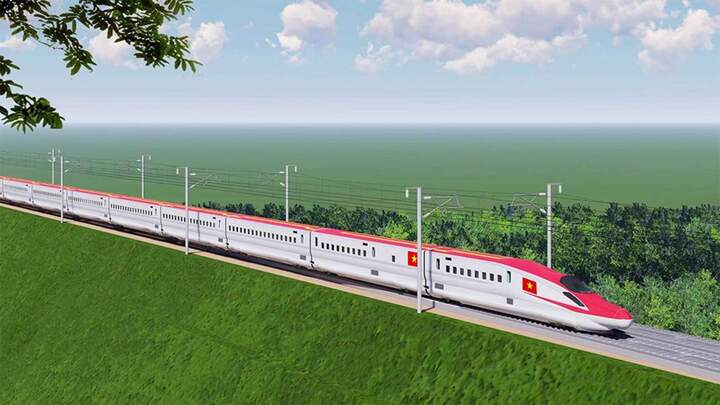
The North-South high-speed railway has the potential to revolutionize settlement preferences, making megacities less of a priority. (Illustrative image)
Mr. Nguyen Van Dinh, President of the Vietnam Real Estate Brokers Association, offered his analysis: “Developing new towns along the high-speed railway line is an effective solution to address the housing supply and demand imbalance in Hanoi and Ho Chi Minh City, the two hottest markets in this regard.”
He continued, “Once this railway is operational, those studying or working in Hanoi but originating from provinces 100-300 km away will be able to commute daily. This will ease the demand for housing in big cities, stabilizing rental and purchase prices. Over time, this will help restructure the real estate market and redefine the industry.”
Land fever in big cities and provincial centers will gradually subside, and in the distant future, with the robust development of high-speed railways, even the dream of home ownership for the poor will become a reality.
Sharing this view, Professor Dang Hung Vo, former Deputy Minister of Natural Resources and Environment, asserted that the construction of the North-South high-speed railway will facilitate the formation of large cities along the route, reshaping the real estate market.
“The development of cities along the railway line is inevitable and constitutes one of the project’s values,” Mr. Vo stated.
The construction of the North-South high-speed railway will facilitate the formation of large cities along the route, reshaping the real estate market. Prof. Dang Hung Vo, former Deputy Minister of Natural Resources and Environment
“The question arises as to whether the 20 stations proposed in the draft are sufficient to disperse the population density in large cities. If we can solve this equation, we will no longer face the issue of a concentrated population in megacities,” Mr. Vo added.
According to Mr. Vo, the North-South high-speed railway project will facilitate the dispersion of the population, alleviating the burden on large cities and fostering the emergence of modern new towns, albeit with a gradual shift towards localities and provincial areas.
Mr. Vo cited the example of Germany, where the motto is “a 10-minute drive to a city.” This slogan has fostered a thriving nation, with a balanced supply and demand for commercial housing across the country. This is a model that Vietnam should emulate as it develops its real estate market along the North-South high-speed railway.
“High-speed railways will not only solve the housing supply and demand equation but also help curb speculative pricing,” Mr. Vo emphasized.
Sharing this perspective, Mr. Do Van Hat, Chairman of the Board of Directors of the Transport Investment and Construction Consulting Joint Stock Company, remarked that Vietnam’s elongated geography lends itself well to the impact of high-speed railways on the national economy, including the real estate sector.
“Compared to some countries with high-speed railways, where each line usually develops either a horizontal or vertical axis due to their round and large territory, Vietnam only needs a single north-south line to influence the economy across all regions,”
“Smooth transportation will boost trade, bringing regions closer together and narrowing economic gaps. This will also significantly contribute to the development of the real estate market along the country,” Mr. Hat analyzed.
Specifically, when the high-speed railway is operational and the North-South real estate ecosystem takes shape, the population distribution across the country will become more harmonious and rational. People can choose to live in the localities along this route while working in larger cities or other provinces.
“When the settlement mindset of the people changes, the infrastructure pressure on large cities, which are already overloaded, will be alleviated,” Mr. Hat said.
The Need for New Towns Along the High-Speed Railway
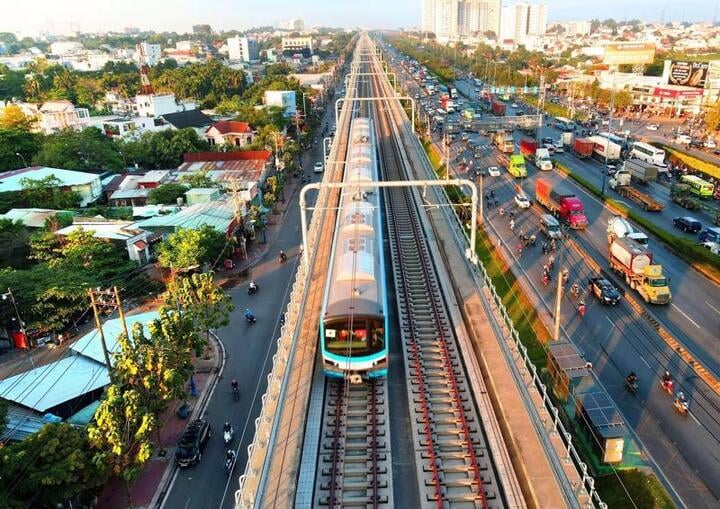
Experts emphasize the importance of planning new towns along the North-South high-speed railway. (Illustrative image)
Expert Nguyen Tri Hieu also shared his perspective, suggesting that in addition to developing the North-South high-speed railway, Vietnam should proactively plan new towns along this route, as this is essential and crucial.
“This should be a plan with a national scope. It should not only focus on the development of the North-South railway axis but also encompass the real estate ecosystem, specifically new towns along this route. These towns will attract residents who can live in one province and work in another thanks to the high-speed railway,” Mr. Hieu said.
Mr. Nguyen Quang Huy, CEO of the Faculty of Finance and Banking at Nguyen Trai University, offered his insights: In the context of Vietnam’s transition to a new growth model, modernizing infrastructure, and restructuring cities, the high-speed railway is not just a transportation project but also a symbol of national vision and a strategic impetus for a new phase of deeper, more sustainable, and widespread development.
“The North-South high-speed railway and its surrounding infrastructure, if implemented synchronously and with a long-term plan, will greatly contribute to transforming Vietnam’s real estate market,” Mr. Huy emphasized.
The North-South high-speed railway and its surrounding infrastructure, if implemented synchronously and with a long-term plan, will greatly contribute to transforming Vietnam’s real estate market.
Mr. Nguyen Quang Huy, CEO of the Faculty of Finance and Banking, Nguyen Trai University
According to Mr. Huy, the central cities of Hanoi and Ho Chi Minh City will experience a reduction in population density, alleviating infrastructure, housing, transportation, and environmental pressures. People can live in the provinces and work in the cities, commuting efficiently thanks to the high-speed railway, similar to satellite cities in Japan, South Korea, France, and other countries.
Additionally, the provinces with high-speed railway stations will enter a robust development phase, becoming new growth poles for the real estate market with three pillars: modern new towns, smart industrial parks, and world-class tourist resorts.
Consequently, a real estate ecosystem will emerge along the high-speed corridor, where land is still abundant and affordable, offering sustainable growth potential for mid to long-term investors to enter strategically.
Notably, Mr. Huy pointed out that it’s not just about building a railway line but about transforming these corridors into “new growth poles,” following the example of many countries, including China, Japan, France, and Germany.
Along the North-South high-speed railway, we can develop modern satellite cities with green and convenient living, international connectivity, new industrial centers near seaports, airports, and railways to gain a competitive edge in the global supply chain, and world-class tourist resorts with shortened travel times, synchronized infrastructure, and superior amenities.
Simultaneously, we can shape international financial centers and expand the space for the development of finance, logistics, education, healthcare, and technology, thereby not only advancing the real estate sector but also transforming the national economy.
“High-speed railways represent a leap in thinking, from developing urban areas based on administrative boundaries to linking regions according to transportation, economic, and demographic logic. With this project, we’re not just gaining a new transportation route but also redesigning the national economic landscape and establishing development centers on par with regional and international standards,” Mr. Huy analyzed.
The experts also noted that high-speed railway projects, whether road or rail, are typically constructed outside urban areas, mainly on rural land. As a result, businesses can develop real estate in the suburbs, creating new towns along the country.
Recently, VinSpeed High-Speed Railway Investment and Development Joint Stock Company (part of the Vingroup ecosystem) expressed its interest in investing in the North-South high-speed railway project. The company hopes to commence construction before December this year and operate the entire line before December 2030.
In response to this proposal, many ministries and sectors have expressed their support and welcomed the suggestion. Meanwhile, Deputy Prime Minister Tran Hong Ha has requested the ministries to report on VinSpeed’s proposal before May 22.
The New Halong Bay Condo Market: High Compression, Opportunities for the Early Birds.
The Halong real estate market is experiencing an extended period of accumulation, with a stagnation in the supply of high-rise apartments. However, the first signs of recovery are emerging, presenting opportunities for astute investors with a keen eye for future trends and a willingness to embrace the right segments.
“National Movement for Prosperity: Vietnam’s Race to Thrive”
“Vietnam is set to prioritize the development of its private sector. With a renewed focus on fostering a vibrant and diverse economy, the country aims to unleash the potential of its private enterprises. This strategic shift marks a pivotal moment in Vietnam’s economic journey, signaling a departure from traditional models and embracing a future driven by innovation and entrepreneurial spirit.”


























